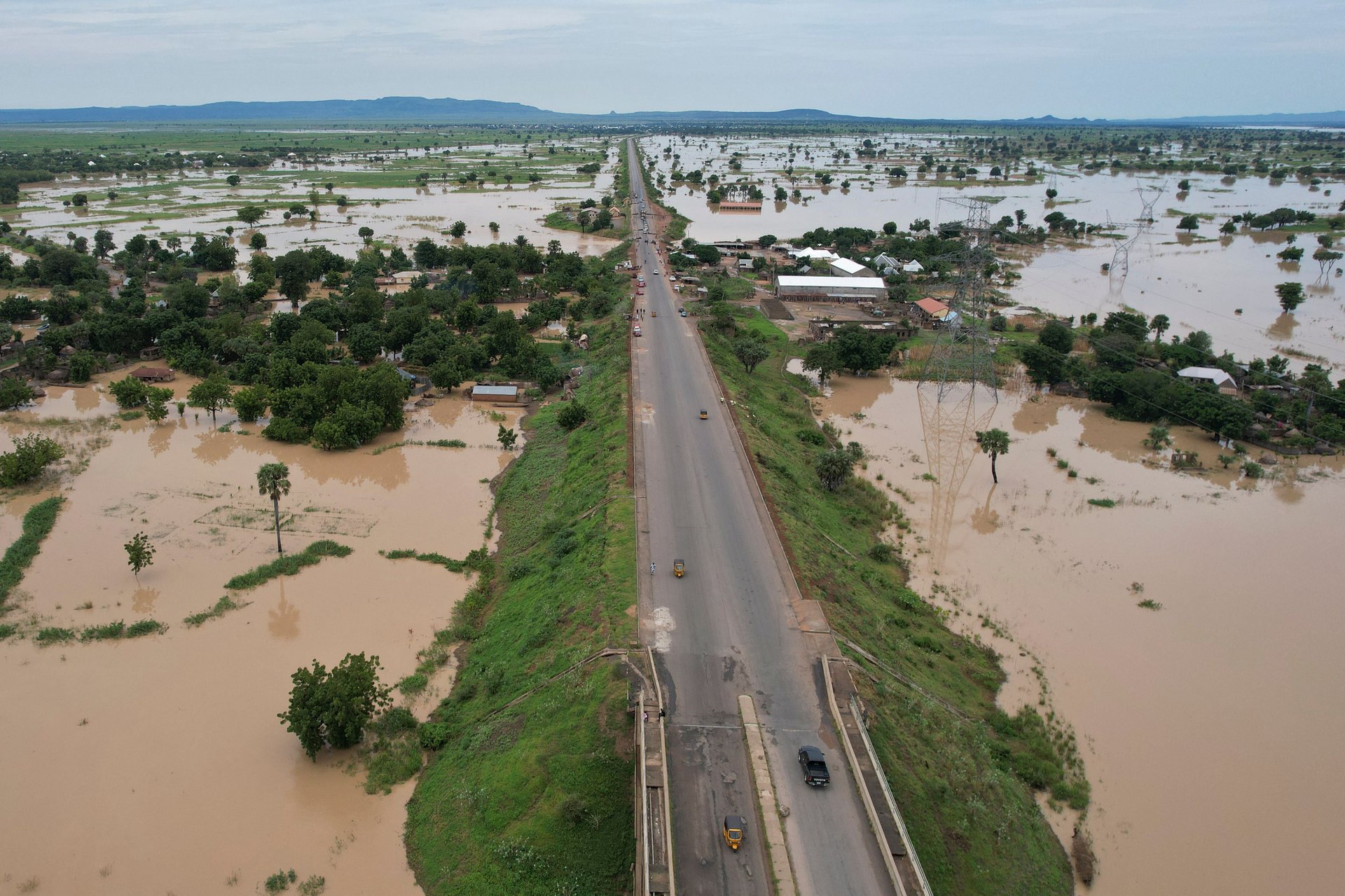Flooding threatens African food supplies just as much as drought
The world needs to fine-tune its famine warning system to account for floods

After drought dwindled food supplies in Somalia to dangerous levels earlier this year, the Famine Early Warning Systems Network, which monitors food insecurity around the world, issued an urgent call for aid.
The system, which is widely used by humanitarian groups to distribute food, is less fine-tuned to gauge the effects of flooding. But a new study by researchers at the University of Maryland, New York University, and Columbia University, shows floods can be as devastating to food supplies as drought.
Though flooding events have become more frequent and intense, their impact on food supplies is complicated to measure because they can have a variety of effects, ranging from positive to negative.
Flooding can damage farming infrastructure, roads for shipping, mills where food is stored, and factories where food is produced. It can also wash away crops, though sometimes it can be beneficial for them as well.
The researchers’ analysis found that flooding affected the food supplies of more than 5.6 million people in several African countries.
Hot spots of flood impacts on food security include western and central South Sudan, northwestern Malawi, and along the Niger river in Nigeria.
What is FEWS NET?
FEWS NET, or the Famine Early Warning System Network, was developed in 1985 by USAID and the US Department of State. It looks at a variety of factors, including agricultural production, weather, markets, and sociopolitical issues, to classify regions in acute need of food aid. The World Bank relies on it for its own food insecurity warning system, the Famine Action Mechanism (FAM), along with many other countries and organizations looking for baseline information.
FEWS NET assesses the level of food insecurity in an area at any given time and classifies it into five categories: minimal, stressed, crisis, emergency, and famine. The researchers, meanwhile, looked at how floods have historically affected food supplies.
For example, their study shows that Nigeria, where recent flooding displaced over a million people, has areas where floods can have a big impact on food systems. Though, at the moment, the flood-prone areas identified by the researchers fall within the “minimal” level of food insecurity, according to FEWS NET’s ranking.
Why flooding is less well understood than drought
The impact of floods depends on their duration, location, and depth. But FEWS NET does not take all of that into account, in part because governments do not report the effects of flooding in standardized ways.
Another reason is a somewhat simplistic view of flooding. In the case of drought, no rain means no food. But in the case of a flooding, rain is just one driver that could affect food supplies.
“We often think of rainfall and flooding, but the time period between when you have excess rainfall and when you have the floods is not so clear,” said Sonali McDermid, an author of the study.
Failing to understand these nuances could result in some areas getting too much aid, and others not enough.
As the push to anticipate disasters increases, more funding is going into early warning systems for humanitarian aid. The authors hope their research can be used to make FEWS NET and other efforts like it more accurate, so that funds can be routed to the neediest regions.
“We need to be sure of the intentions of the data,” said Andrew Kruczkiewicz, an author of the study. “There’s an increasing risk of wasting funds, spending funds in areas that aren’t the top priority.”
This story was edited to clarify the differences in how the researchers and the FEWS NET assess flooding.